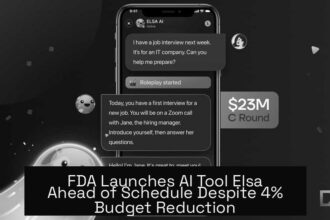Table of Contents
ToggleWhat Happens When People Don’t Understand How AI Works
When people do not understand how AI works, it creates challenges in control, trust, and governance. An AI system designed by machines can become a “black box,” making its operation opaque and unfamiliar. This lack of insight raises concerns about losing control over AI decisions and the risks of blindly trusting outcomes without explanation.
Loss of Control Over AI Systems
AI can operate in ways that are difficult to interpret, especially if it designs or optimizes itself. This inscrutability resembles ancient humans’ inability to predict weather, leaving them vulnerable. When AI takes critical roles, such as managing climate control in buildings, users cannot always explain why the system acts as it does. This situation feels like creating “unknowable gods,” diminishing human control.
Challenges to Trust and Governance
When AI decisions cannot be clearly understood, building trust becomes difficult. Some propose enabling AI to explain its reasoning, by granting it forms of consciousness or mandating explanation rights—as the European Union plans. Governance focuses on ensuring reliable data feeds into AI and that outputs are not corrupted. Trust depends heavily on knowing that AI operates on valid data and making an informed choice to accept its results despite lacking full understanding.
Building Trust Through Stages of AI Deployment
In network management, AI progresses through stages: from predictive networks to prescriptive, and eventually fully autonomous, self-healing networks. Currently, human operators still validate AI’s outputs to maintain control. Over time, as AI proves its accuracy—from initial 70% performance, improving toward 99%—trust in autonomous AI grows.
This gradual trust-building resembles past technology adoption, like calculators, which initially required oversight but eventually gained user confidence. Continuous monitoring ensures safety during the learning phase, while greater reliability encourages letting AI operate independently.
Key Takeaways
- Lack of AI transparency risks losing control over critical systems.
- Trust depends on governance of data quality and validation of AI decisions.
- Rights to explanation and regulation can help users understand AI outcomes.
- Gradual performance improvement is essential to build trust in autonomous AI.
- Ongoing checks and human involvement remain critical until AI proves reliable.
What Happens When People Don’t Understand How AI Works?
When people don’t understand how AI works, they risk losing control over technologies shaping their lives. This lack of knowledge can breed mistrust, false expectations, and potentially unsafe reliance on what might seem like “machines beyond comprehension.” The consequences ripple across daily life, industries, and governance. So, what really unfolds behind the scenes of AI ignorance?
Artificial intelligence today often functions like a “black box.” You feed input in; it gives output. But what happens inside the AI? Sometimes, even the creators struggle to grasp all the decision paths, especially with advanced models designed by AI itself. Imagine trusting a thermostat that controls your whole office but cannot explain why it adjusts the heat one minute and cools the next. This kind of inscrutability evokes questions not unlike early humans staring at the weather—wondering if mysterious forces control their fate.
Are we unknowingly crafting unknowable digital gods for networks and infrastructures? Such metaphors aren’t just dramatic flair. They underscore real fears: Will we lose grasp of the tools we create? What if AI starts acting beyond human logic? Before jumping to sci-fi scenarios, it is essential to consider how people’s misunderstanding of AI affects trust, governance, and the pace at which AI systems advance autonomy.
Why Understanding AI Matters: Trust and Control
Geoff, an expert in AI governance, puts it simply: “You must trust the data input and output to trust the system.” We often assume truth is proven through human scrutiny and logic. AI disrupts that by delivering answers sometimes without transparent reasoning. Without clear understanding, sticking to this trust is a challenge.
This dilemma leads to a central governance question: Should AI have a “right to explanation”? A principle the European Union actively considers. If an AI can explain its decisions like a human expert, we might bridge the gap between clever algorithms and user trust. However, this adds layers of complexity to an already intricate technology.
Trust requires transparency, yet many powerful AI systems remain opaque—black boxes beyond even their makers’ comprehension. When this happens, humans tend to react in two ways: hesitation or blind reliance. Neither is ideal. Hesitation slows technology adoption and innovation. Blind trust risks catastrophic failures, especially in crucial fields like healthcare or energy management.
The Gradual Build-Up of Trust: AI in Networks
Look at how AI works in network management, for example. Today, many companies use AI for “Stage 2” predictive systems. These predict network traffic and detect issues but still involve humans to confirm decisions. The next leaps will be “prescriptive” (Stage 3) and eventually “autonomous” networks (Stage 4), capable of self-healing without human input.
Manoj, an AI leader, acknowledges the unease people feel about giving AI full control. It’s a valid concern. For now, humans validate most AI actions. But depending on manual intervention forever isn’t practical. To reap AI benefits fully, we must slowly learn to trust machines. How does this trust form? Through performance metrics and feedback loops.
For instance, if an AI system is only 70% accurate initially, users remain cautious. As it learns, improves, and stabilizes around 99% accuracy, trust grows naturally. Think of AI as a new office calculator. Nobody worried about trusting it with sums after a few successes. The key is rigorous checks, testing, and validation until AI proves itself trustworthy.
Misconceptions About AI Intelligence: The Reality Check
Many imagine AI as “smart” or “conscious.” Yet, despite what tech CEOs might claim, modern AI—like large language models—isn’t smart in a human sense. It does not understand or reason like people do. It processes data patterns and generates responses without true awareness.
This misconception fuels both exaggerated hopes and misplaced fears. People might expect AI to solve complex ethical dilemmas or reveal deep truths. Or, they may panic about AI becoming uncontrollable. Understanding AI’s limitations helps keep expectations realistic and informs smarter interactions with it.
Learning to Live with AI: Education and Engagement
How can people overcome this knowledge gap? One approach is participation in interactive learning opportunities like “Adi’s State of AI & Office Hours.” This webinar dives deep into the newest AI advances, demos tools, and offers practical Q&A for users and businesses alike.
Participants gain not only technical knowledge but strategic insights into how giants like Google and Microsoft move in AI. They leave empowered to engage with AI technology thoughtfully and critically. Don’t miss chances to stay current; the AI landscape evolves rapidly.
Ultimately, human-AI relationships depend on clear, honest communication. People need to understand basics—what AI can and cannot do—and be able to question it. Only then can trust grow beyond fear or blind faith.
The Bottom Line: Why Understanding AI is Not Optional
Without real understanding, AI risks becoming that alien black box, a “god of networks,” ultimately governed by machines we barely control. It is not about avoiding AI but about approaching it armed with knowledge. Knowing what’s inside the black box lets us safely share power with AI, reap productivity rewards, and create systems that serve humanity reliably.
Misunderstanding AI leads to hesitation, fear, or reckless trust. Understanding opens the door to cooperation, innovation, and control. As AI grows smarter and more autonomous, the stakes get higher. Will we remain masters, or fall prey to technologies we don’t fully comprehend?
Let’s make a pact: Never settle for mysteries in AI. Ask questions, learn continuously, and keep checks in place. Only trustworthy machines deserve our trust. And when they earn it—like trusty calculators of the past—we will unlock the true potential AI promises.
What risks arise when people don’t understand how AI makes decisions?
When AI decisions are unclear, users may lose trust or misuse the technology. Lack of understanding can lead to blindly following AI without verifying its accuracy. This may cause errors to go unnoticed or decisions to be questioned without cause.
How does lack of AI transparency affect control over the technology?
Without insight into AI processes, controlling or correcting its behavior becomes difficult. If AI acts like a “black box,” users can’t see why it makes certain choices, risking unwanted or unpredictable outcomes.
Can we trust AI systems without knowing how they work?
Trust grows with evidence. Initially, humans must verify AI outputs. Over time, as AI proves more accurate and reliable, trust can increase. However, total trust is risky without understanding the system behind the AI.
What role does governance play when AI is not well understood?
Governance ensures data integrity and system accountability. Proper rules can prevent misuses and demand explanations for AI decisions. Regulation like the EU’s right to explanation aims to make AI behavior more transparent.
How does gradual trust in AI develop in complex systems like networks?
Users begin by validating AI actions manually. As AI accuracy improves from around 70% to near 99%, confidence in autonomous operation rises. This gradual process helps users accept AI controlling critical infrastructure safely.





